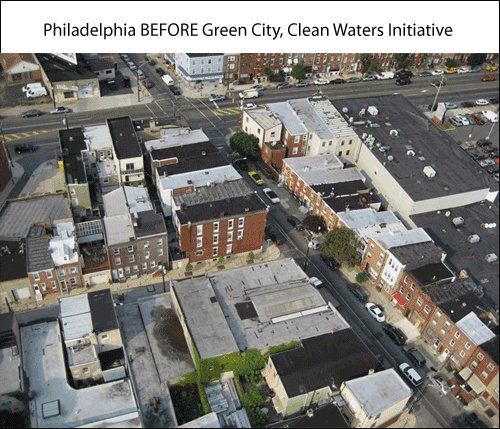
We haven't quite wrapped up 2011 yet, but it's already turning out to be one of the most disastrous years in U.S. history, in terms of extreme weather. The freak Halloween snowstorm in the Northeast is the 14th billion-dollar weather disaster of the year, according to global reinsurance company AON Benfield. (The previous record was 9 billion-dollar weather disasters, from 2008.) Tornadoes, hurricanes and floods have killed more than 600 people and caused an estimated $53 billion in damages this year.
While no one will ever be able to say for sure that a particular storm, like last week's Alaskan "blizzicane," is directly linked to global warming, the pattern of more frequent and more intense storms, severe droughts, and flooding that we've been seeing is exactly what climate scientists have predicted as the effects of global warming.
As my colleagues on this blog have mentioned, extreme storms are the new abnormal -- and municipal governments are on the front lines of these weather disasters. The good news is that some city leaders are taking steps to make their towns more resilient in the face of all storms, big and small.
I worked for the City of New York for nine years, and I can attest that extreme storms create a huge headache for cash-strapped local governments. Towns forced to dig out from a blizzard in October could very well bust their winter budgets by February. Flooding is also a major concern. Earlier this year in New York, towns had to reach out for federal disaster assistance following the 1-2 punch of tropical storms Lee and Irene. The Susquehanna River rose 41 feet, flooding thousands of homes, some of them right up to the rooftops. Tens of thousands of residents were evacuated, and sewage treatment plants were inundated and overflowing, making the water unsafe to drink.
Many cities don't have the infrastructure to deal with excess water from a normal storm, let alone the flooding brought about by the supposed "100-year" storms that seem to have become regular occurrences. In some cities, just an inch of rain can trigger sewer systems to dump raw sewage into local lakes, beachfronts, or rivers.
In a new report released today, NRDC looks at 14 cities, big and small, that are choosing to use green infrastructure as a cost-effective means to reduce the flooding and water pollution caused by both extreme and everyday storms. By building out and encouraging features such as green roofs, porous pavement, rainwater cisterns and roadside plantings, which help absorb rainfall, these cities will be better prepared to handle excess stormwater.
The conventional stormwater infrastructure of piping and underground storage allows 10 trillion gallons of water to roll off rooftops, parking lots and roads each year, carrying garbage, pet waste, and oil and gas drippings directly into local water bodies. Green infrastructure, on the other hand, absorbs rain right where it falls, keeping water out of overburdened sewer systems, mitigating flooding and reducing water pollution. It can even help turn costly stormwater into usable water for the community.
Philadelphia is building out the most ambitious green infrastructure plan in the country, retrofitting about one-third of the impermeable surfaces in areas served by its overloaded combined sewer system--about 60 percent of the city--using features like green roofs, parks, porous pavement and planted medians. These green infrastructure tools will help capture an inch of stormwater runoff before it overwhelms the sewer system. The city even has a block-long permeable street that did not flood during recent storms, despite widespread flooding elsewhere.
[Image courtesy Philadelphia Water Department]
Philadelphia estimates the city's green infrastructure, together with a smaller investment in traditional infrastructure, will reduce sewer overflows by 8 billion gallons each year, in addition to making the city a cleaner, healthier place to live. The project would cost billions of dollars less than building out conventional stormwater infrastructure, and would return more than $1 of economic, social and environmental benefits for every $1 invested.
Smart cities are getting ahead of the game by building green infrastructure, because global warming promises to make stormwater problems even worse. We need a national effort, though, to truly tackle this issue head-on. First, the EPA can help advance green infrastructure solutions nationwide by including green infrastructure requirements for stormwater when it updates 20-year-old clean water rules this fall. And city leaders who are feeling the impacts of global warming on their budgets need to stand up and demand national action on climate change.
